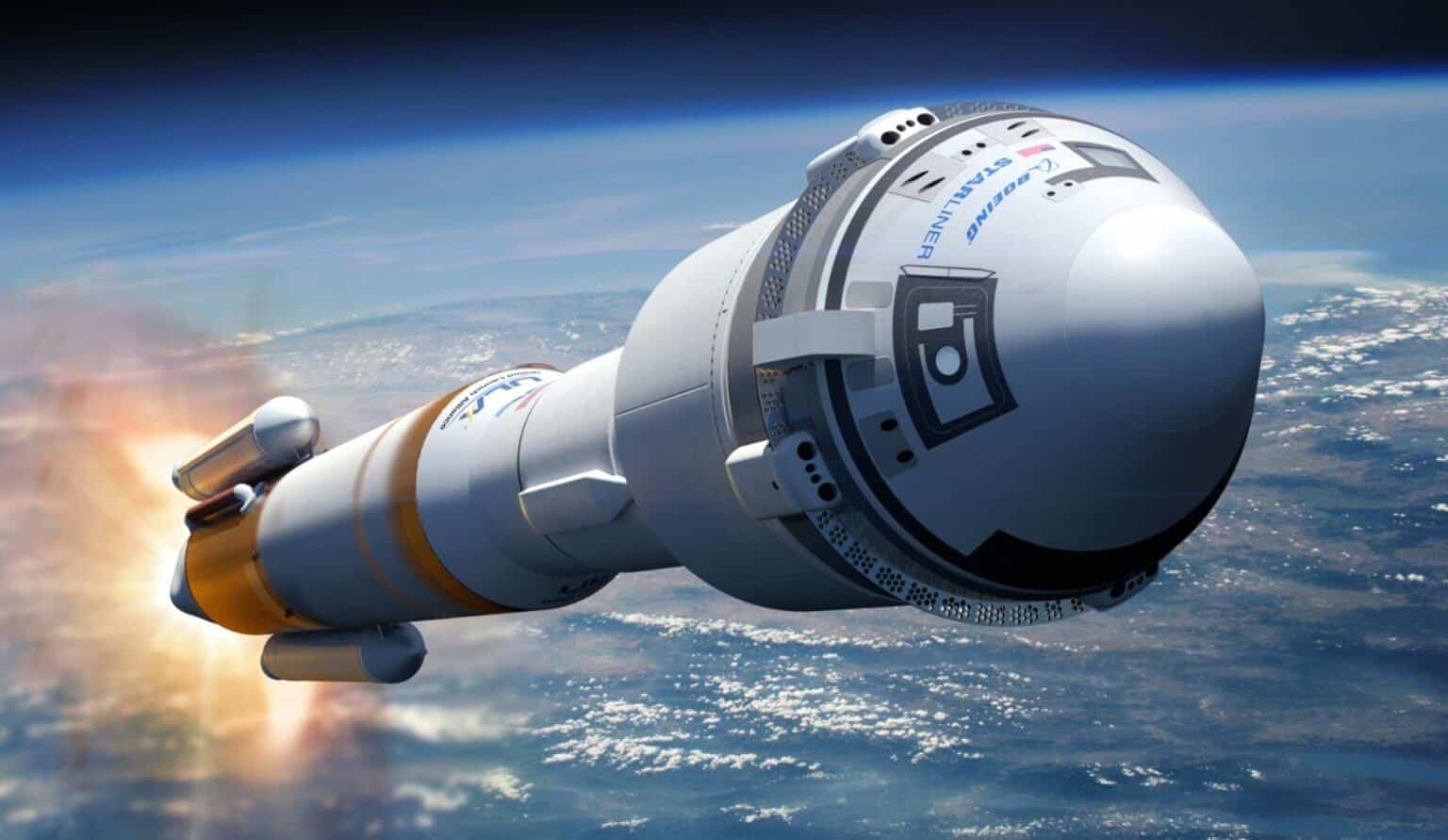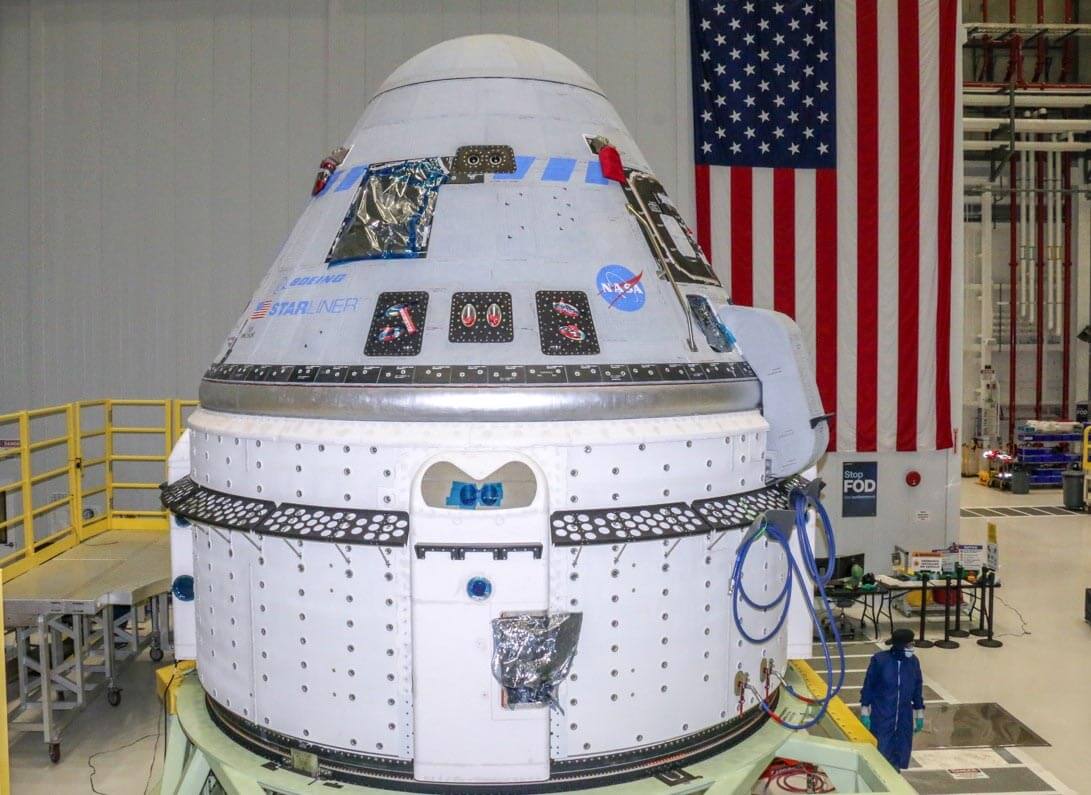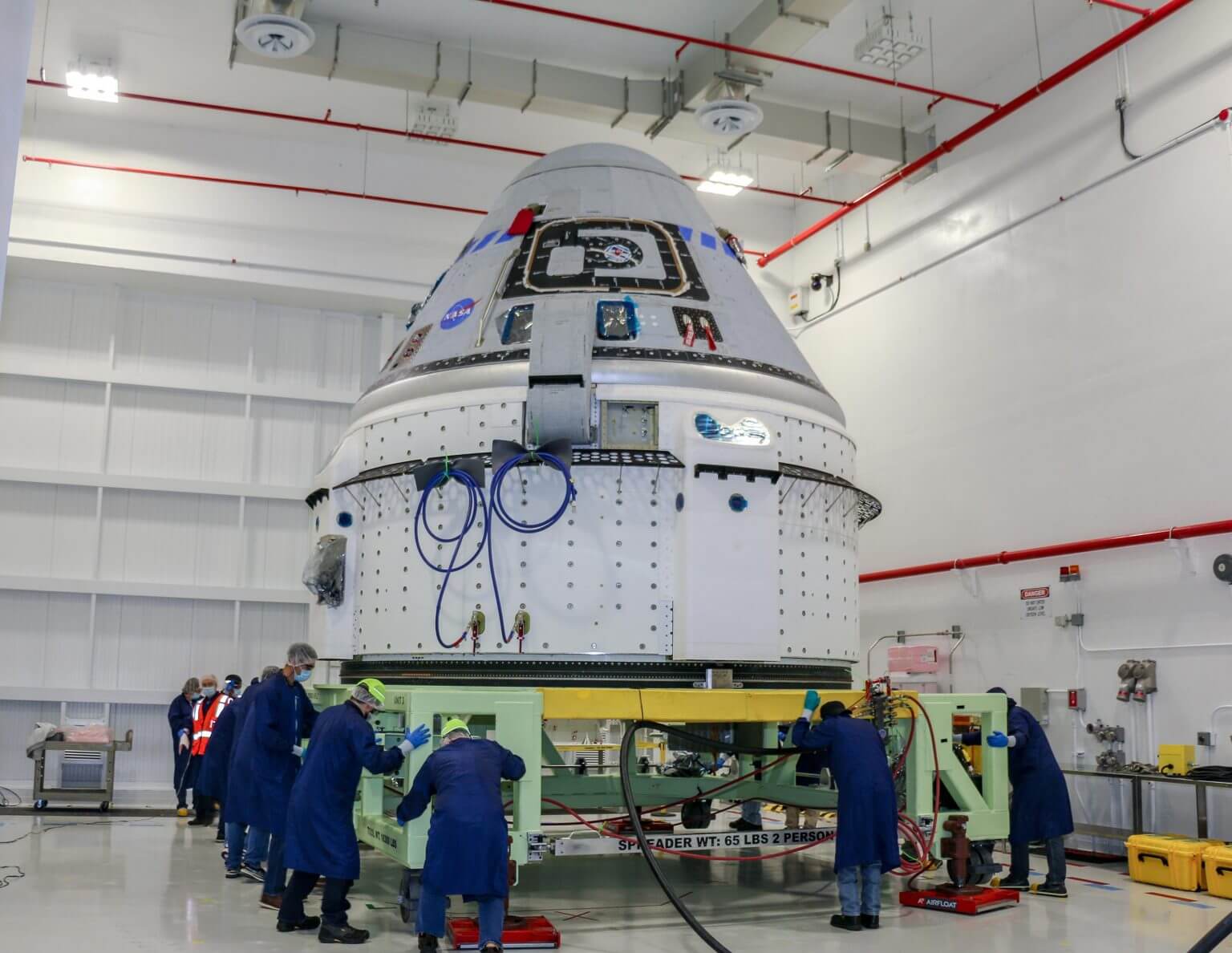After SpaceX overtakes Boeing, NASA and Boeing continue preparations for the second, as-yet-unmanned flight of Starliner to prove that the system can safely carry astronauts to and from the International Space Station

NASA and Boeing are continuing preparations for the second and still unmanned flight of Starliner to prove that the system can safely carry astronauts to and from the International Space Station.
It should be noted that the service is provided by two companies at the same time as the second company - SpaceX has already sent several manned crews to the space station in the last two years, and all of them landed safely in the Gulf of Mexico off the coast of West Florida.
Crews at the Starliner Manufacturing Facility at NASA's Kennedy Space Center in Florida recently began refueling the Starliner Crew Module and Service Module in preparation for the July 2 launch of the second Orbital Flight Test (OFT-30). Refueling operations are expected to wrap up this week as crews load fuel inside the facility's hazardous processing area and perform final inspections.
After refueling operations are completed, Boeing and United Launch Alliance (ULA) crews are preparing to move the Starliner to the Vertical Integration Facility (VIF) at Cape Canaveral's Space Launch Complex 41 for integration into ULA's Atlas V rocket. Starting this week, ULA will begin stacking or assembling the Atlas V rocket at VIF during an operation called Launch Vehicle on Stand (or LVOS)

Technicians prepare Boeing's CST-100 Starliner for an orbital flight test (OFT-2) at the Commercial Crew and Payload Processing Facility at NASA's Kennedy Space Center in Florida on June 2, 2021. Part of the agency's Commercial Crew program, OFT - 2 is a critical developmental milestone on the company's path to flying crewed missions for NASA. Credit: Boeing
In preparation for Starliner's next flight, NASA and Boeing implemented all actions recommended by the independent review team established after the first Starliner test flight in December 2019. The review team's recommendations included details regarding integrated testing as well as simulations, operational processes and improvements, software requirements, improvements Communication systems in the staff modules and organizational changes. Boeing implemented all recommendations, even those that were not mandatory, for the upcoming Starliner flight.
"I am very proud of the NASA and Boeing Starliner teams as they work methodically toward next month's OFT-2 mission and perform final tests of the crew module and service module hardware and software as we prepare for this important test mission," said Steve Stich, crew program manager. NASA commercial. Closing all of the independent review team's findings for the software and communications systems is a huge milestone for the commercial team program and involved many long hours of testing and review by our dedicated Boeing and NASA teams during the Covid-19 pandemic.
In the coming weeks, mission control teams in Florida and Texas will continue to conduct simulated mission dress rehearsals for the OFT-2 unedited crew missions. Starliner's landing and recovery teams will conduct an inspection at one of the vehicle's landing areas.

A Boeing CST-100 Starliner spacecraft flown on Orbital Flight Test-2 (OFT-2) is seen at the Commercial Crew and Payload Processing Facility at NASA's Kennedy Space Center in Florida on June 2. Part of the agency's commercial crew program, OFT-2 is a critical developmental milestone on the company's path to flying crewed missions for NASA (Lashmit, already mentioned in the previous image caption as well as in the body of the article) Credit: Boeing
During the OFT-2 mission, Starliner will test its unique navigation system to autonomously dock with the space station and deliver about 200 kilograms of equipment for NASA. Starliner is expected to spend five to ten days in orbit before being released from the station, returning to a soft landing on the West Coast of the United States.
NASA and Boeing will seek opportunities near the end of the year to fly Starliner's first crewed mission, the Crew Flight Test (CFT) to the space station with NASA astronauts Barry "Mud" Willmore, Nicole Mann and Mike Finke on board.
Boeing is upgrading the first crew module along with a new service module. The CFT Atlas V hardware is expected to arrive in Florida for processing next week as crews prepare for both missions at the same time.
Boeing designed and developed the Starliner spacecraft in support of NASA's Commercial Crew Program to provide safe and sustainable commercial transportation services for crews and cargo to the International Space Station and low Earth orbit destinations.
NASA's Commercial Crew Program works with industry through a public-private partnership to provide safe, reliable and cost-effective transportation to and from the International Space Station that will allow for additional research time. The space station remains the springboard for space exploration, including future missions to the moon and eventually Mars.
For information on the NASA website
More of the topic in Hayadan:
- Two days after the launch failure, Boeing's Starliner lands safely in New Mexico
- A malfunction in Boeing's Starliner spacecraft prevented it from reaching the space station * The spacecraft is supposed to carry astronauts to the station in the future
- 17:45 – Spaceship1 did it
- Three experiments from the Technion will be launched to the International Space Station
- Living in a bubble: Inflatable modules could be the future of space housing

2 תגובות
The Boeing Starliner is one big mask of failures.
The world view of the mechanical planners is outdated about 40 years back) compared to the competitor SpaceX.
-Anyone who looks into the interior of the two spaceships sees the not-so-subtle difference between the spaceships.
At Spice X, all displays are touch screens and barely 8 mechanical buttons. And at Boeing everything is handles and levers, switches and buttons. And barely 2 display screens.
Boeing's software department is very weak. The world view of the previous CEO (Dennis Milenberg) was to outsource all software writing to outside providers and as a result the software department became very weak, and people within the department do not actually know what is written in the lines of code of the software they are responsible for. And the external suppliers who wrote the software also recruited programmers for the projects. And when the project was over, they were fired. As a result, there are lines in the software that are a black box without Boeing's control. (The same is true for the 777X, which is also delayed because of the exact same problem. And with the 737MAX, Boeing took a long time to respond to the malfunctions. In the software (about a year and a half) because the Boeing programmers had to learn what the software does, because it was not theirs)
Due to delays in launches of almost two years, Boeing has a very difficult human problem, with the crews of the astronauts who were supposed to be launched. The astronauts sit in the Boeing idly and wait, while they see with teary eyes, how their friends who went to SpaceX carry out missions. And the result is that 3 astronauts who were supposed to fly into space on behalf of Boeing have already retired from the business and that's it. And every time NASA "happily" announces the appointment of a replacement astronaut... and introducing a new astronaut into the system requires training for the specific mission at a cost of several million dollars...
NASA today trusts SpaceX much more than Boeing, and therefore it prioritizes SpaceX flights over Boeing's flights (except that SpaceX flights are much cheaper and therefore cost NASA less) and therefore Boeing is forced to thread its flights between the scheduled flights of Spice X. There is a problem with the number of access ports to the American module and currently two SpaceX spacecraft (one for cargo and the other for astronauts) are adjacent to them. And Boeing now has to wait patiently for one of the linkage keys to free up.
So, as mentioned, Boeing's situation in this matter is not alarming at all, despite the "happy" message published by NASA.
the mother